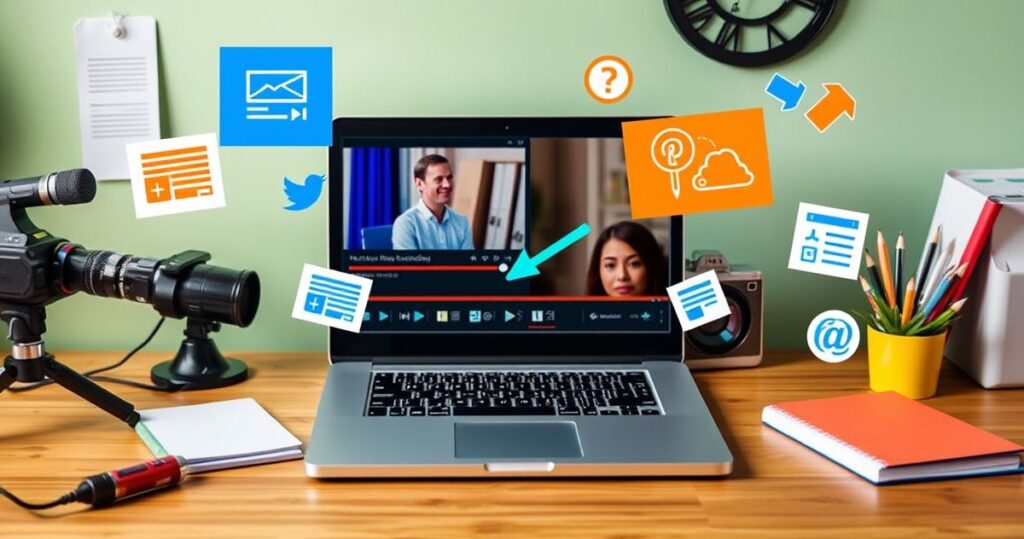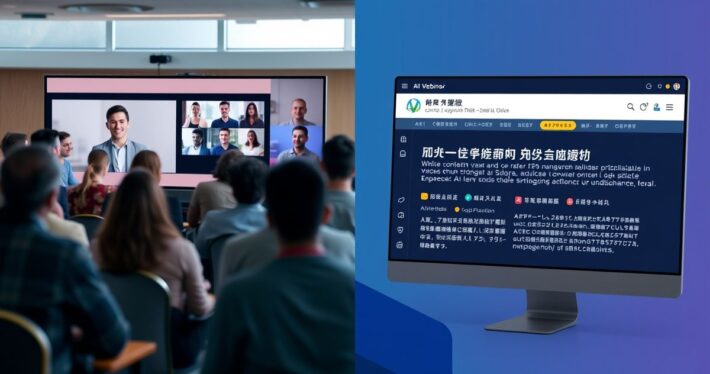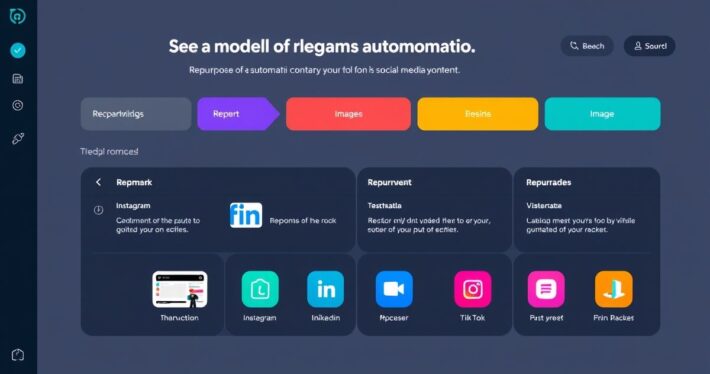Top tools for turning webinar recordings into evergreen content.

Turning Webinar Recordings into Evergreen Gold
Evergreen content is the backbone of any successful digital marketing strategy—it’s the gift that keeps on giving. And if you’ve hosted webinars, you’ve already created a treasure trove of content waiting to be repurposed. But how do you turn those raw webinar recordings into polished, evergreen assets that drive traffic, engagement, and conversions long after the live event? The answer lies in using the right tools and strategies.
Let’s face it—webinars are a lot of work. From planning to promotion to execution, they demand significant time and resources. But here’s the kicker: most marketers only use their webinar content once. That’s a missed opportunity. With the right tools, you can transform those recordings into blog posts, social media snippets, eBooks, and more. This not only saves time but also extends the ROI of your webinar efforts.
Now, let’s dive into the top tools and techniques for turning your webinar recordings into evergreen content that keeps working for you.
1. Video Editing Platforms: Polishing Your Raw Footage
The first step in repurposing webinar recordings is editing them into digestible, high-quality videos. Here are some of the best tools for the job:
- Adobe Premiere Pro: Ideal for professionals, this platform offers advanced editing features like multi-camera support, color correction, and audio enhancement. It’s perfect for creating polished webinar recaps or highlight reels.
- Descript: A game-changer for content creators, Descript combines video editing with transcription capabilities. Edit your webinar like a text document, remove filler words, and add captions for accessibility.
- Canva Video Editor: If you’re looking for a user-friendly option, Canva’s video editor is a great choice. Add intros, outros, and graphics to make your webinar content visually appealing.
Pro Tip: Trim your webinar into shorter clips for social media. A 60-minute webinar can easily become 10-15 bite-sized videos for platforms like Instagram, LinkedIn, and TikTok.
2. Transcription Services: Unlocking Text-Based Content
Your webinar recordings are a goldmine of text-based content—blogs, eBooks, and lead magnets. Transcription tools make it easy to extract this value:
- Otter.ai: This AI-powered tool transcribes your webinar in real-time or from recordings. Its accuracy and ability to identify speakers make it a top pick.
- Rev: For 99% accuracy, Rev’s human transcription service is worth the investment. Use the transcripts to create SEO-friendly blog posts or downloadable PDFs.
- Sonix: A fast and affordable option, Sonix also offers translation services, making it ideal for global audiences.
Fun Fact: Adding transcripts to your videos can boost SEO by making your content more searchable. Google loves it, and so do your viewers.
3. Content Repurposing Tools: Automating the Process
Why start from scratch when automation tools can do the heavy lifting?
- Repurpose.io: This tool automatically converts your webinar recordings into multiple formats—YouTube videos, podcast episodes, and social media clips. It’s a time-saver and ensures your content reaches diverse audiences.
- Lumen5: Turn webinar transcripts into engaging video content with Lumen5’s AI-powered platform. Add visuals, animations, and music to create shareable videos.
- Headliner: Designed for podcasters, Headliner also works wonders for webinars. Create audiograms, quote cards, and video snippets in minutes.
Case Study: A SaaS company used Repurpose.io to turn a 45-minute webinar into 12 social media posts, 3 blog articles, and a podcast episode. Result? A 35% increase in organic traffic and a 20% boost in lead generation.
4. Graphic Design Tools: Enhancing Visual Appeal
Visuals are key to making your repurposed content stand out. These tools can help:
- Canva: Create eye-catching thumbnails, infographics, and slideshows from your webinar content. Drag-and-drop functionality makes it easy for beginners.
- Visme: Turn webinar slides into interactive infographics or eBooks. Visme’s templates and customization options are a marketer’s dream.
- Piktochart: Another great tool for infographics, Piktochart is perfect for summarizing webinar key takeaways in a visually appealing format.
Pro Tip: Use branded templates to maintain consistency across all your repurposed content.
5. Automation Platforms: Streamlining Your Workflow
Automation is the secret sauce to scaling your evergreen content efforts.
- Zapier: Connect your webinar tools (e.g., Zoom, Google Drive) to your content platforms (e.g., WordPress, Mailchimp) for seamless workflows. Automate tasks like uploading videos, sending email updates, and publishing blog posts.
- Airtable: Organize your repurposing projects with Airtable’s project management features. Track progress, assign tasks, and collaborate with your team efficiently.
Real-World Example: A marketing agency used Zapier to automate the process of uploading webinar recordings to YouTube and embedding them in blog posts. This saved them 10+ hours per webinar.
Challenges and How to Overcome Them
Repurposing webinar content isn’t without its challenges. Here are some common pain points and solutions:
-
Challenge 1: Time Constraints
Solution: Use automation tools to reduce manual work. Start small—focus on one piece of repurposed content per webinar. -
Challenge 2: Lack of Creativity
Solution: Leverage AI tools like ChatGPT to brainstorm ideas or rewrite content in different formats. -
Challenge 3: Maintaining Consistency
Solution: Create a content repurposing checklist to ensure every webinar follows the same process.
Final Thoughts
Turning webinar recordings into evergreen content isn’t just smart—it’s essential in today’s content-driven landscape. By leveraging the right tools, you can maximize the value of your webinars, reach new audiences, and keep your marketing efforts fresh and relevant.
So, what are you waiting for? Dust off those webinar recordings and start creating content that stands the test of time.



